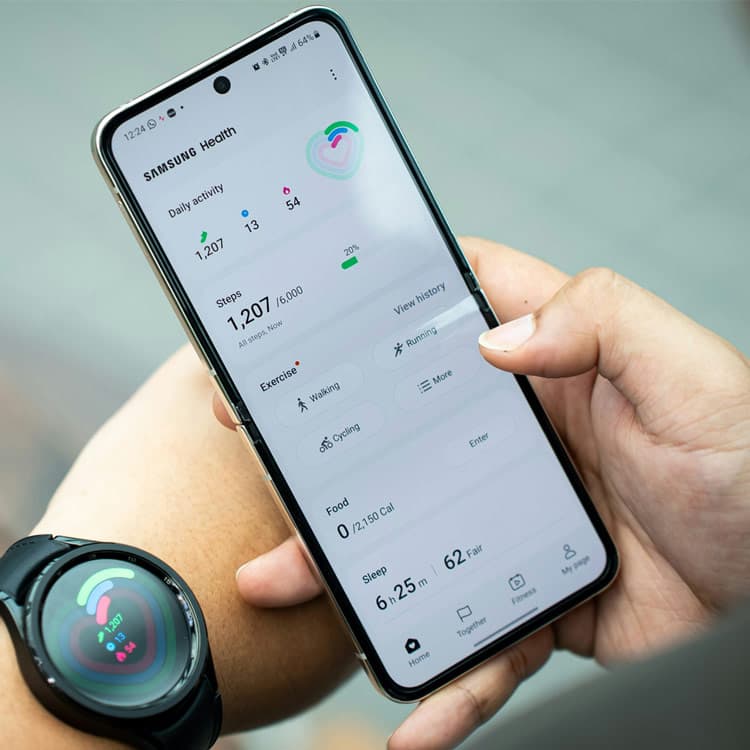Web designers and e-commerce businesses are always faced with a huge design dilemma: are we creating for the present moment or planning for the long term? This is a fine line the e-commerce industry often walks, requiring a delicate balance between addressing immediate user needs and anticipating future trends and advancements. In this article, I'd like to lay out the intricacies of designing for the now and for the distance, highlighting the distinct differences and the critical considerations within web design, e-commerce, and innovation.
Designing for Now
1. Responsive User Experience
Designing for the present involves focusing on the current user experience. This means understanding and adapting to the immediate needs, preferences, and behaviours of your users. Responsive design is a must, ensuring seamless functionality across various devices and platforms commonly used today.
2. Current Design Trends
Keeping up with design trends is vital when addressing the now. Whether it's minimalist aesthetics, bold typography, or immersive visuals, aligning with trends enhances user engagement and keeps the interface visually appealing.
3. User Behaviour Analysis
Regularly analysing user behaviour data provides invaluable insights into the current user journey. Identifying pain points, optimising navigation, and refining interface elements based on real-time data ensures that the design is tailored to the users of today.
Designing for the Distance
1. Foresight and Adaptability
Designing for the distance demands a strategic approach. It involves anticipating technological shifts and user behavioural changes. Designers must create adaptable frameworks capable of seamlessly incorporating emerging technologies like AR, VR, or novel interaction models.
2. Scalability and Future-Proofing
While addressing current needs is important, designing for the distance requires an eye on scalability and future-proofing. The architecture must be flexible, allowing for easy integration of innovations without requiring a complete overhaul.
3. Innovation and Emerging Technologies
The future-focused design embraces innovation. Integrating emerging technologies, such as AI, voice-activated interfaces, or immersive experiences, positions a platform for sustained relevance as the digital landscape evolves.
So, what are the distinguishing factors?
1. Iterative refinement vs. strategic planning
Designing for now often involves a cycle of iterative refinement based on immediate feedback, while designing for the distance requires strategic planning to incorporate innovations on time.
2. Immediate user needs vs. future user expectations
The former centres on meeting the immediate needs and expectations of users, while the latter involves predicting and preparing for how user expectations might evolve.
3. Current technologies vs. emerging technologies
Designing for the now prioritises current technologies and standards, whereas designing for the distance necessitates an awareness of and readiness for new technologies that may shape the future.
Choosing between designing for the now and designing for the distance is a nuanced decision that hinges on your business model. A startup might prioritise quick responsiveness, while established businesses could lean towards the future for strategic adaptability. The key is finding the strategy that aligns with your business identity and growth trajectory. Make sure you consider both the immediate and future needs of your users.
يواجه مصممو الويب وشركات التجارة الإلكترونية دائمًا معضلة تصميمية ضخمة: هل نبتكر للحظة الحالية أم نخطط للمدى الطويل؟ هذا خط رفيع غالبًا ما تسير فيه صناعة التجارة الإلكترونية، مما يتطلب توازنًا دقيقًا بين تلبية احتياجات المستخدم الفورية وتوقع الاتجاهات والتطورات المستقبلية. في هذه المقالة، أود أن أعرض تعقيدات التصميم في الوقت الحاضر وفي المستقبل، مع تسليط الضوء على الاختلافات الواضحة والاعتبارات الحاسمة في تصميم الويب، والتجارة الإلكترونية، والابتكار.
التصميم للوقت الحاضر
- تجربة المستخدم المستجيبة
التصميم للحاضر يتضمن التركيز على تجربة المستخدم الحالية. وهذا يعني فهم وتكييف الاحتياجات الفورية والتفضيلات والسلوكيات للمستخدمين. يعد التصميم سريع الاستجابة أمرًا ضروريًا لضمان الأداء السلس عبر الأجهزة والأنظمة الأساسية المستخدمة اليوم.
- الاتجاهات الحالية في التصميم
مواكبة اتجاهات التصميم أمر بالغ الأهمية عند التعامل مع الوقت الحاضر. سواء كان ذلك من خلال التصميم البسيط، أو الطباعة الجريئة، أو المرئيات الغامرة، فإن التماشي مع الاتجاهات يعزز من تفاعل المستخدم ويضمن جاذبية الواجهة بصريًا.
- تحليل سلوك المستخدم
يوفر التحليل المنتظم لبيانات سلوك المستخدم رؤى لا تقدر بثمن حول رحلة المستخدم الحالية. يتيح تحديد نقاط الألم وتحسين التنقل وتعديل عناصر الواجهة بناءً على البيانات في الوقت الفعلي لضمان تصميم موجه للمستخدمين اليوم.
التصميم للمستقبل
- البصيرة والقدرة على التكيف
يتطلب التصميم للمستقبل نهجًا استراتيجيًا. يتضمن توقع التحولات التكنولوجية والتغيرات السلوكية للمستخدمين. يجب على المصممين إنشاء أطر عمل قابلة للتكيف قادرة على دمج التقنيات الناشئة مثل الواقع المعزز والافتراضي.
- القابلية للتوسع والتحديث المستقبلي
بينما تلبية الاحتياجات الحالية أمر مهم، فإن التصميم للمستقبل يتطلب رؤية طويلة الأمد لضمان التحديث المستقبلي. يجب أن تكون البنية مرنة بما يكفي لدمج الابتكارات دون الحاجة إلى إعادة التصميم الكامل.
- الابتكار والتقنيات الناشئة
يعتمد التصميم المستقبلي على الابتكار. يشمل دمج تقنيات مثل الذكاء الاصطناعي والواجهات الصوتية والتجارب الغامرة، مما يعزز من استدامة المنصة وتطورها مع المشهد الرقمي.
الاختلافات الأساسية بين التصميم للآن والمستقبل
- التحسين التدريجي مقابل التخطيط الاستراتيجي
غالبًا ما يتضمن التصميم للآن تحسينات متكررة استنادًا إلى ردود الفعل الفورية، في حين يتطلب التصميم للمستقبل تخطيطًا استراتيجيًا لدمج الابتكارات في الوقت المناسب.
- احتياجات المستخدم الفورية مقابل التوقعات المستقبلية
يركز التصميم للحاضر على تلبية الاحتياجات الفورية، بينما يركز التصميم للمستقبل على التنبؤ بتغيرات التوقعات المستقبلية والتحضير لها.
- التقنيات الحالية مقابل التقنيات الناشئة
يُعطي التصميم للحاضر الأولوية للتقنيات والمعايير الحالية، بينما يتطلب التصميم للمستقبل وعيًا واستعدادًا للتقنيات الجديدة التي قد تشكل المستقبل.
الاختيار بين التصميم للوقت الحاضر والتصميم للمسافة هو قرار دقيق يعتمد على نموذج عملك. قد تعطي الشركات الناشئة الأولوية للاستجابة السريعة، في حين يمكن للشركات القائمة أن تتجه نحو المستقبل من أجل القدرة على التكيف الاستراتيجي. المفتاح هو العثور على الاستراتيجية التي تتوافق مع هوية عملك ومسار النمو. تأكد من مراعاة الاحتياجات الفورية والمستقبلية لمستخدميك.
.jpg)
.jpg)

